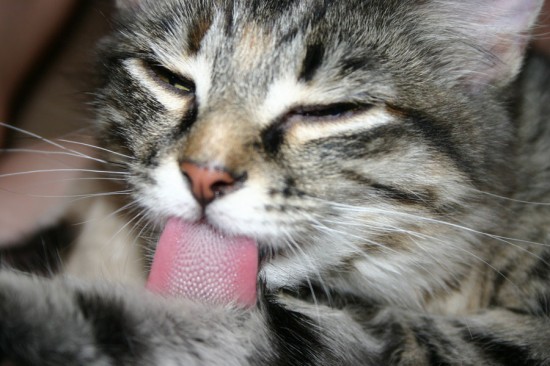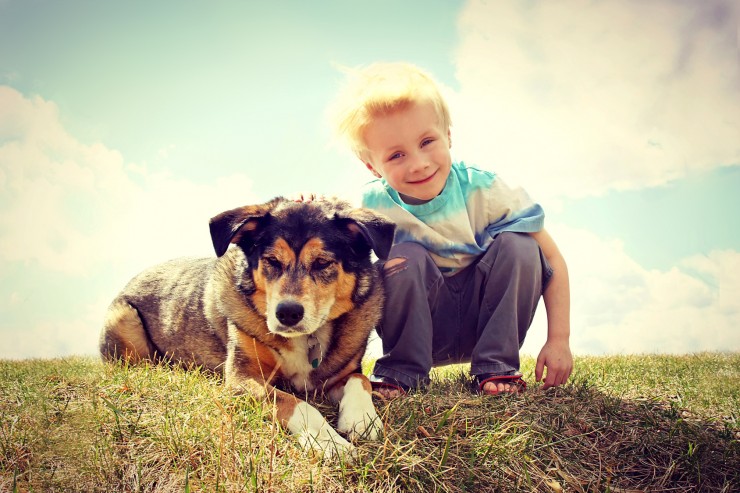
My friend had a dog that rarely had any physical activity. The
dog was only let out into the backyard to go to the bathroom.
The dog was overweight with its stomach hanging to the ground
and had a long list of health problems including heart disease.
This is not only cruel to animals but it affects their life in
various ways. Unfortunately my friend’s dog passed away at an
early age due to its lifestyle.
Keeping your dog fit will improve his quality of life as well as
the aging process. When he reaches his peak, your dog will
continue to have a youthful presence and may even pass its life
expectancy. Quality of life has an important impact on your dog.
Letting your dog have regular physical activity will minimize
the amount of age related illnesses. Physical activity will also
keep the weight off your dog and increase its psychological
well-being.
Before you try and keep your dog fit, you must understand that
diet is important in keeping your dog healthy. What your dog
eats and how much he eats will impact his physical activity. If
you feed your dog things that are high in fat or salt, you’ll
risk your dog’s health. It is truly expensive to buy the best
dog food on the market but you must understand that it is
expensive for a reason: it is the best possible way to keep your
dog healthy. Cheaper dog foods are high in fat and salt content
that they do nothing for your dog except make it unhealthy. Your
dog needs food that are high quality, and meat-based. You
mustn’t feed your dog too much either as it will increase the
dog’s fat cells.
A dog must exercise each and every tissue in its body in order
for physical activity to be rewarding. You should get your
veterinarian to check your dog out to make sure he is suitable
for physical activity. Some dogs require more activity than
others. Appropriate activities should be chosen for specific
dogs. These include jogging, rollerblading, biking, playing
fetch, cross-country skiing or even walking. There are many
other activities that are not listed that you can perform with
your dog.
Before you take your dog out for one of these activities, try
running with it for a mile or so to assess its endurance. If the
dog cannot keep up with you and shows certain signs of fatigue
(panting, dry mouth, trying to find shade, stops to drink water,
abnormal gait and does not want to continue) then obviously the
dog needs to cut down on the distance. Try to do this again the
next day and if he shows further signs, then a veterinarian
should check him out. For most dogs, these signs don’t always
occur. If this is the case, then increase the distance every few
days so your dog gets used to running longer distances. This can
be done by increasing the distance by a half mile to a mile.
Always check your dog’s paws for cuts as this may cause
discomfort.
The best possible way to exercise your dog is by cycling. This
increases your dog’s muscles. Your dog will be less likely to
have any injuries. Try having your dog run without a leash and
on a soft surface. Like humans, running on a hard surface hurts
the joints. Choose gravel paths to ensure that your dog does not
have any injuries. Swimming is also good exercise for your dog.
Try having your dog swim in calm waters. Throwing a stick and
making your dog fetch it is perfect in the water. It really gets
the dog’s muscles moving.
Below is a chart of interval training for your dog. Each
training exercise allows different muscles to be used.
BEGINNER: 1 km trot 1 km slow/easy gallop (canter – for horse
people) 1 km trot
ADVANCED: 1 km trot 1 km slow/easy gallop 1 km trot 1 km
slow/easy gallop 1 km trot
HARD CORE: 1 km trot 1 km slow/easy gallop 1 km trot 1-2 km hard
gallop 1 km trot 1 km slow/easy gallop 1 km trot
You can usually tell when your dog has been fully exercised. If
the dog drops to the ground and sleeps, then you have probably
overdone the amount of exercise. If your dog comes up to you and
wants to play fetch, play fetch with him so that he can use up
the energy. If your dog wants to take a nap and relax then
you’ve most likely found a perfect exercise program for your
dog. Exercising with your dog will allow you to form a strong
bond together. If you have a dog that does not exercise, it will
most likely be a troublemaker by chewing furniture, barking and
perhaps even develop aggressive behaviour. Sounds like a
teenager doesn’t it? Vet checks should be scheduled yearly to
make sure that your dog is healthy and that it is getting the
appropriate exercise and diet that it needs.
 Over-grooming In Cats
Over-grooming In
Over-grooming In Cats
Over-grooming In
 Common Illnesses In Budgies
Common Illnesses
Common Illnesses In Budgies
Common Illnesses
 How What You Feed Your Dog Can Affect Their Temperament And Personality
How What You Feed
How What You Feed Your Dog Can Affect Their Temperament And Personality
How What You Feed
 Research Shows That Children Are More Likely Than Adults To Be Bitten By Dogs
Research Shows Th
Research Shows That Children Are More Likely Than Adults To Be Bitten By Dogs
Research Shows Th
 Is A Dogue De Bordeaux The Right Dog For You?
Is A Dogue De Bor
Is A Dogue De Bordeaux The Right Dog For You?
Is A Dogue De Bor
Copyright © 2005-2016 Pet Information All Rights Reserved
Contact us: www162date@outlook.com